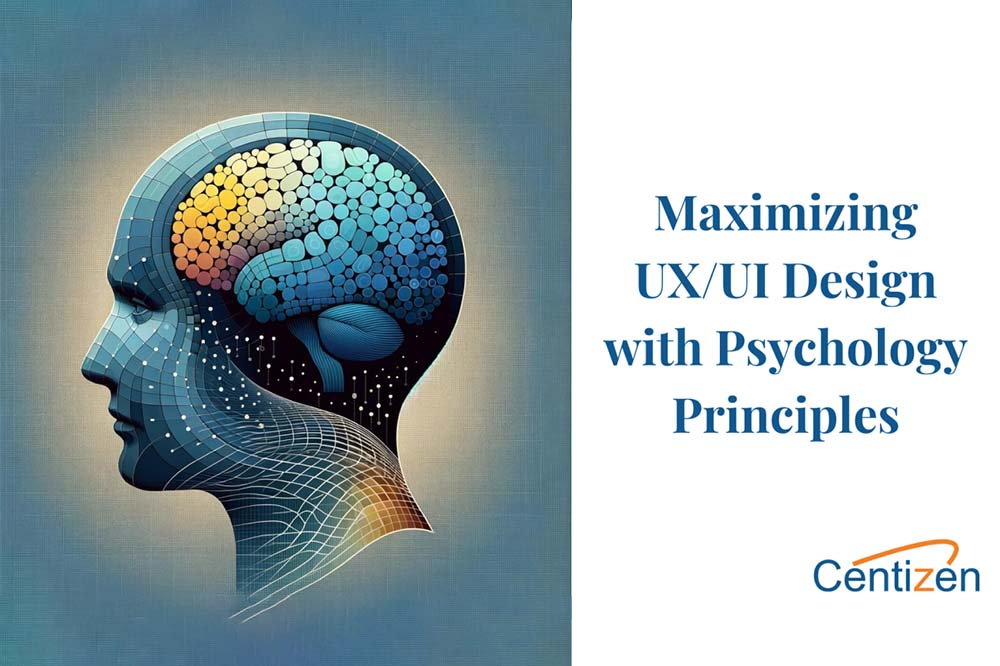Applying Psychology in UX/UI Design: A Practical Guide with Real-World Examples

In the fascinating intersection of psychology and digital design, UX/UI designers have a toolkit brimming with principles derived from human cognition and behavior studies. These principles are not abstract theories but practical tools that, when applied with finesse, can transform good designs into great ones. Here’s how leveraging psychological insights can lead to more intuitive, engaging, and user-friendly digital products, illustrated with real-world examples.
Cognitive load and memory: Making complexity simple
Serial position effect: Ever noticed how you’re more likely to remember the first and last items on a list? Websites like Amazon use this to their advantage by placing high-priority categories at the beginning and end of their navigation bars, ensuring they’re more memorable to users.
Cognitive load: Google’s homepage is a masterclass in reducing cognitive load. By offering a simple, clean interface with minimal options, Google makes the task of searching the internet straightforward and intuitive.
Miller’s law: The classic phone number is divided into chunks (e.g., 123-456-7890) for a reason. Apps like WhatsApp employ a similar strategy by organizing chats and contacts into manageable sections, making information easier to find and remember.
Decoding decision making: The art of choice
Hick’s law: Have you ever felt overwhelmed by too many menu options in a digital tool? Spotify counters this by limiting visible options and categorizing music into clear, broad genres, making decision-making faster and more intuitive.
Fitts’ law: Consider the large, centrally located play button on YouTube videos. Its size and placement minimize the time and effort needed to start watching, enhancing user engagement.
The aesthetics of interaction: Designing with purpose
Gestalt principles: The Dropbox web interface uses proximity and similarity by grouping file and folder icons closely together, making it easy for users to perceive them as related items.
Affordances and signifiers: The underlined text for hyperlinks is a universal signifier for something clickable. This simple cue across websites and apps guides users intuitively on where to click without second-guessing.
Emotional connections: The power of color and aesthetics
Color psychology: Facebook’s use of blue isn’t just a design choice; it’s a strategic one. Blue evokes a sense of trust and security, aligning with Facebook’s goal of creating a reliable social network space.
Aesthetic usability effect: Apple’s website combines aesthetics with usability, featuring high-quality images and a clean layout that not only looks good but also enhances the perception of ease of use.
Ethical design: Building trust through transparency
Avoiding dark patterns: LinkedIn revised its onboarding process to be more transparent and less manipulative, fostering a sense of trust and respect with its users by clearly communicating what actions were being taken and why.
Conclusion: Crafting experiences that resonate
Incorporating psychological principles into UX/UI design is not about manipulation but about creating digital experiences that are inherently more intuitive and user-friendly. By understanding the human behind the screen—what captures their attention, eases their cognitive load, and resonates emotionally—designers can craft products that are not only functional but also delightful to use.
As the digital world becomes increasingly complex, these principles serve as a beacon for designing more human-centered experiences. By looking at real-world applications, from the simplicity of Google’s homepage to the strategic color choices of Facebook, it’s clear that psychology plays a foundational role in guiding UX/UI decisions. This marriage of psychology and design ensures that as technology evolves, it does so in a way that is accessible, understandable, and, above all, centered around human needs and behaviors.
Centizen
A Leading IT Staffing, Custom Software and SaaS Product Development company founded in 2003. We offer a wide range of scalable, innovative IT Staffing and Software Development Solutions.
Contact Us
USA: +1 (971) 420-1700
Canada: +1 (971) 420-1700
India: +91 63807-80156
Email: contact@centizen.com
Our Services
Products
Contact Us
USA: +1 (971) 420-1700
Canada: +1 (971) 420-1700
India: +91 63807-80156
Email: contact@centizen.com






